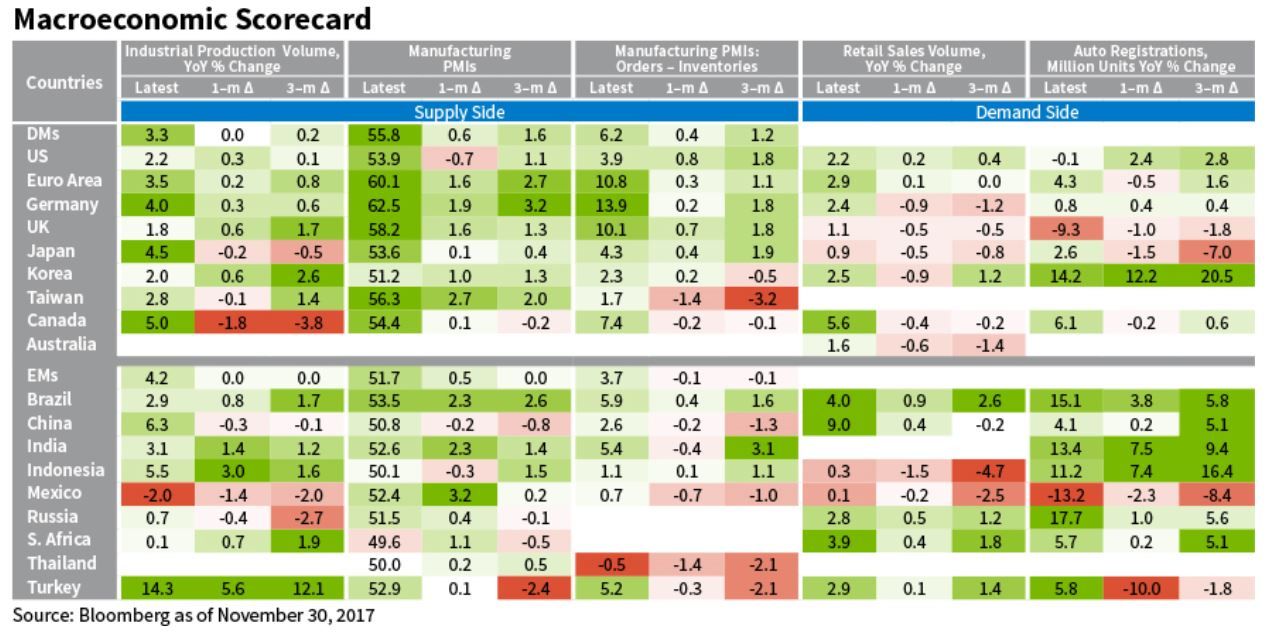
"Previously, I described how we use a tool called the macroeconomic scorecard to inform our fundamental research. In a new series, Macro Scorecard, I will share an updated scorecard and provide key takeaways from our analysis.
The scorecard provides an easy, real-time comparison of key economic indicators across most developed markets and major emerging markets. See below for a more in-depth description of our macro scorecard.
Here are our latest insights from the macro scorecard:
Developed Markets
- Economic growth is accelerating across all developed markets
- The euro area is now accelerating at a stronger pace than the United States
- Retail sales are stabilizing
Emerging Markets
- Growth in emerging markets is stable, largely due to China and Turkey
- We see significant deceleration of growth in Indonesia and Mexico
- Retail sales are decelerating rapidly in Indonesia
- South African consumer spending is improving rapidly
Scorecard Basics
Our macro scorecard consists of five panels, each of which details a single data series. The first three indicators deal with the supply side of the economy, and the last two deal with the demand side (consumer behavior). These indicators include industrial production, manufacturing purchasing managers' indices (PMIs), manufacturing PMI orders minus inventories, retail sales, and motor vehicle registrations. All of these indicators are high frequency (they come out monthly) and are available at the country level.
For each indicator, we show the annual growth rate as well as the one-month and three-month changes in that growth rate. The idea is to see whether the current rate of growth is decelerating or accelerating.
The Indicators
Industrial production. These figures can frequently move the markets because they are considered to be an indicator of future inflation.
Manufacturing PMIs. This survey-based data provides clues not just about the health of the manufacturing sector, but economic growth in general. Many investors use the PMI as a leading indicator for the growth or decline of gross domestic product (GDP).
Manufacturing PMI orders minus inventories. The most forward-looking component of manufacturing PMI, this data is a testament to how company managers think about their order books versus their current production trends. This gives us a predictable indicator of what future industrial volume growth is likely to be.
Retail sales. Retail sales are an important economic indicator because consumer spending drives much of our economy.
Motor vehicle registrations. Cars are an excellent indicator of consumer behavior. If you don't have sustainable income growth or credit growth, you are unlikely to purchase such a big-ticket item."
Olga Bitel
Global Strategist
William Blair



